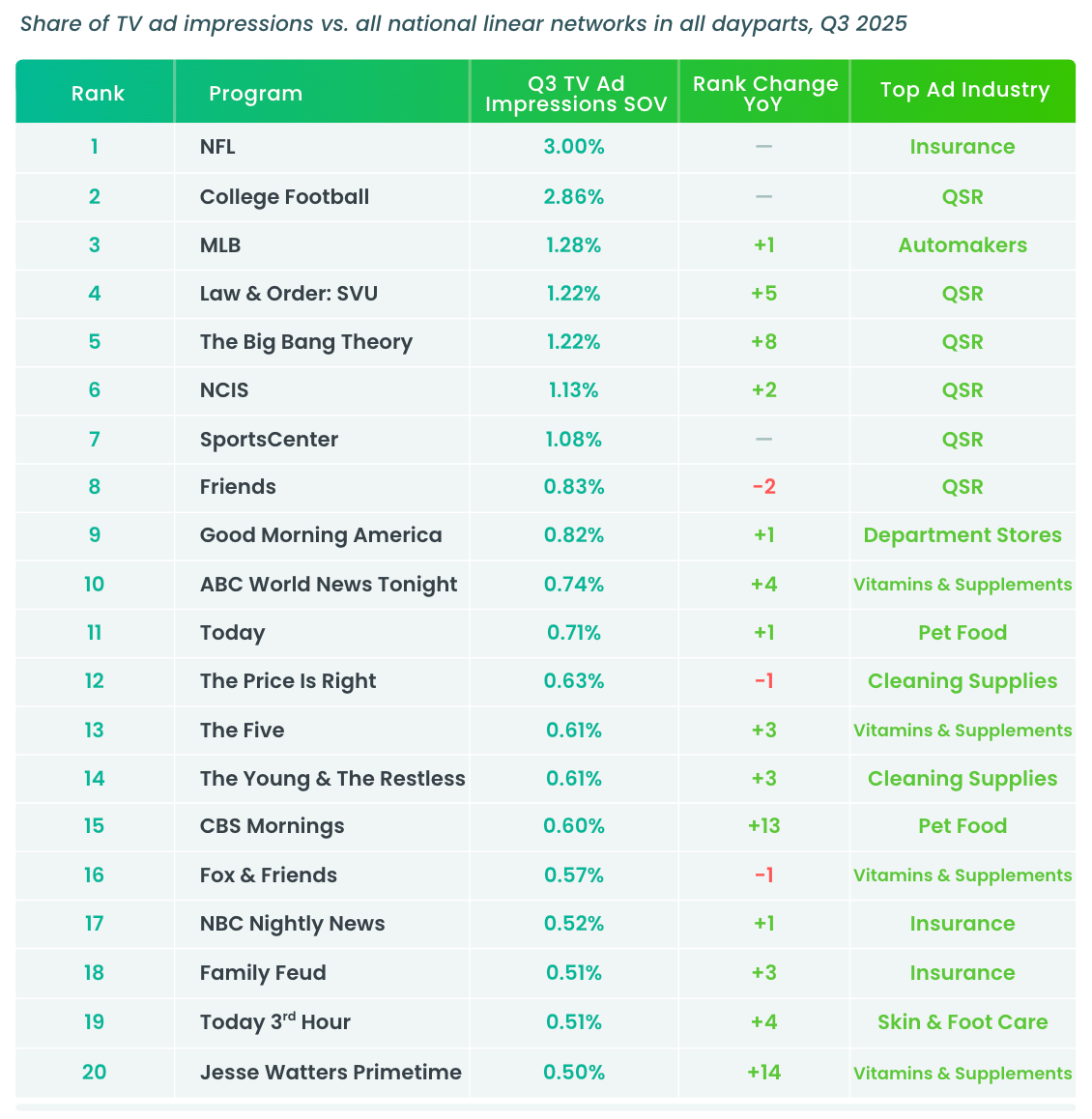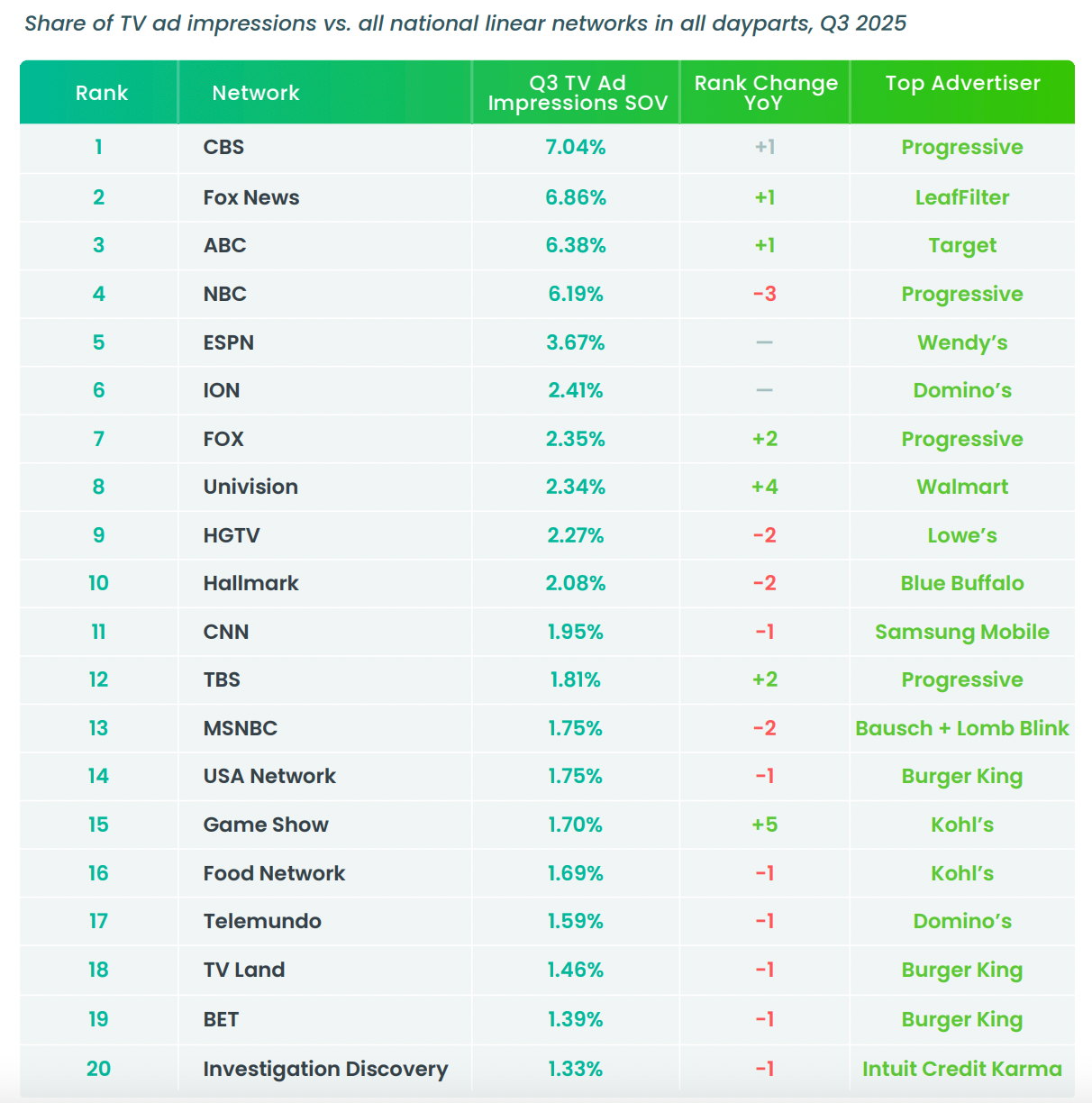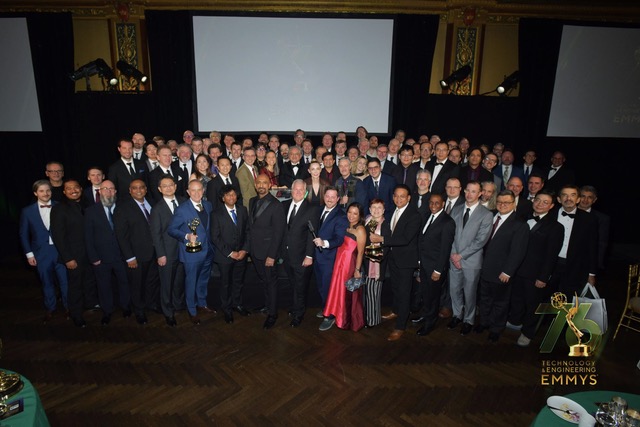TV Ad Impressions for Football Spiked in Q3
Television’s top draw grew became even more important as NFL TV ad impressions grew 12% and college football jumped 16% in Q3 2025 compared to Q3 2024

BELLEVUE, Wash.—Football continued to cement its reputation as a bulwark of TV advertising in Q3 2025 with new data from iSpot that showed both the NFL and college football, typically among the top programming on TV, managed to further increase their reach.
In Q3 2025, the NFL saw TV ad impressions grow by over 12% year-over-year, while college football climbed by more than 16%. Spend also increased in kind during football games: The NFL’s estimated national TV ad spend rose by 9.7% year-over-year, and college football was up 22.5%.
Beyond sports, the iSpot report found that news programs also remained important. News-related programs (including morning shows) accounted for nine of the top 20 spots by TV ad impressions, with most ranked higher year-over-year as well.
Other key findings included:
- Quick service restaurants (QSR) brands are a fixture on streaming, but the industry also leans on high-reach programming; with QSR being the most-seen brand category during six of Q3’s top 10 programs for reach.
- Ad impressions during Spanish-language programming increased from 4.4% of TV to 4.7% year-over-year, with Univision leading the way at 10% more reach vs. Q3 2024.
- Top syndicated programming still has staying power as well – shows like Law & Order: SVU, The Big Bang Theory and NCIS grew reach year-over-year in Q3, and were three of just seven programs total to account for 1% or more of TV ad impressions.
The professional video industry's #1 source for news, trends and product and tech information. Sign up below.
George Winslow is the senior content producer for TV Tech. He has written about the television, media and technology industries for nearly 30 years for such publications as Broadcasting & Cable, Multichannel News and TV Tech. Over the years, he has edited a number of magazines, including Multichannel News International and World Screen, and moderated panels at such major industry events as NAB and MIP TV. He has published two books and dozens of encyclopedia articles on such subjects as the media, New York City history and economics.



